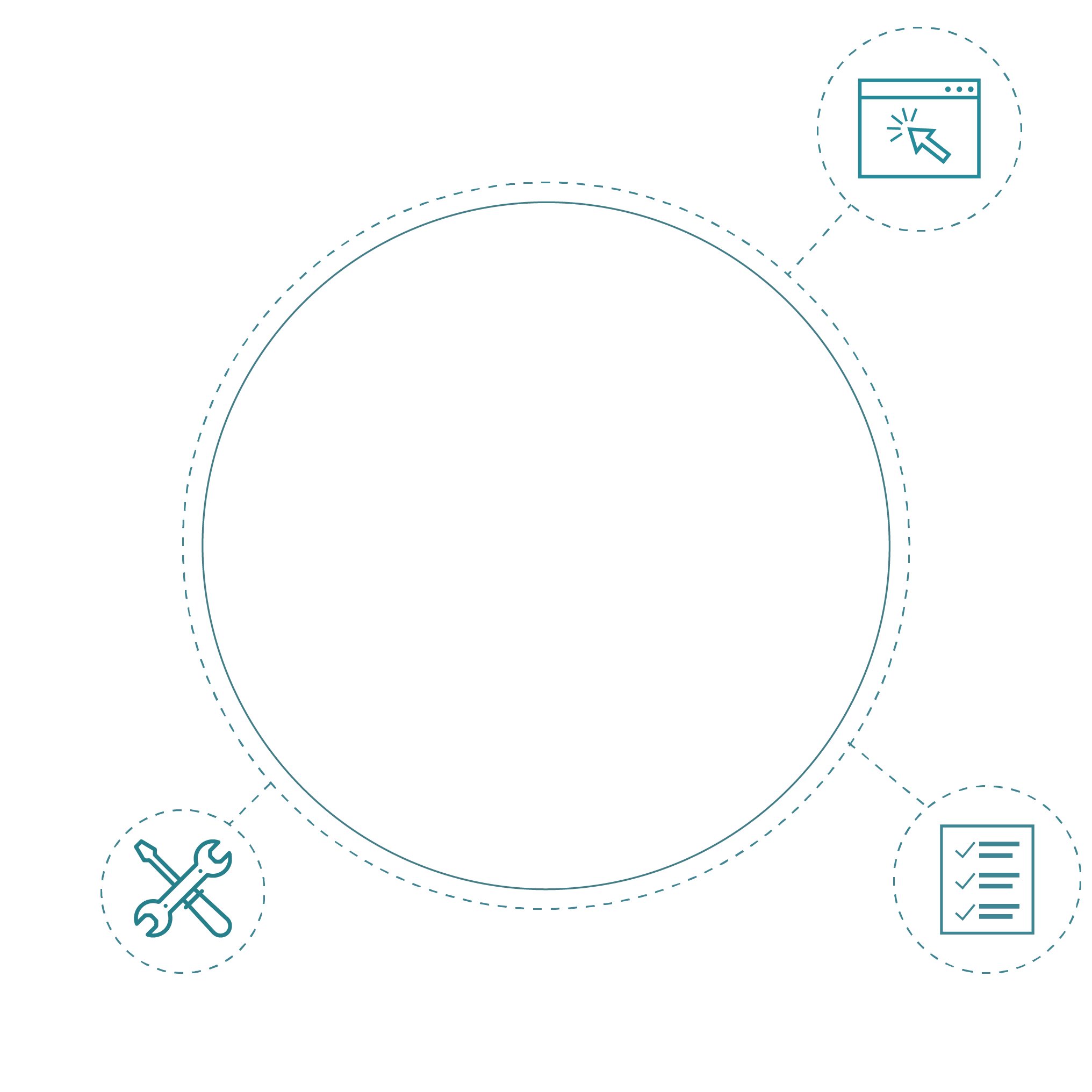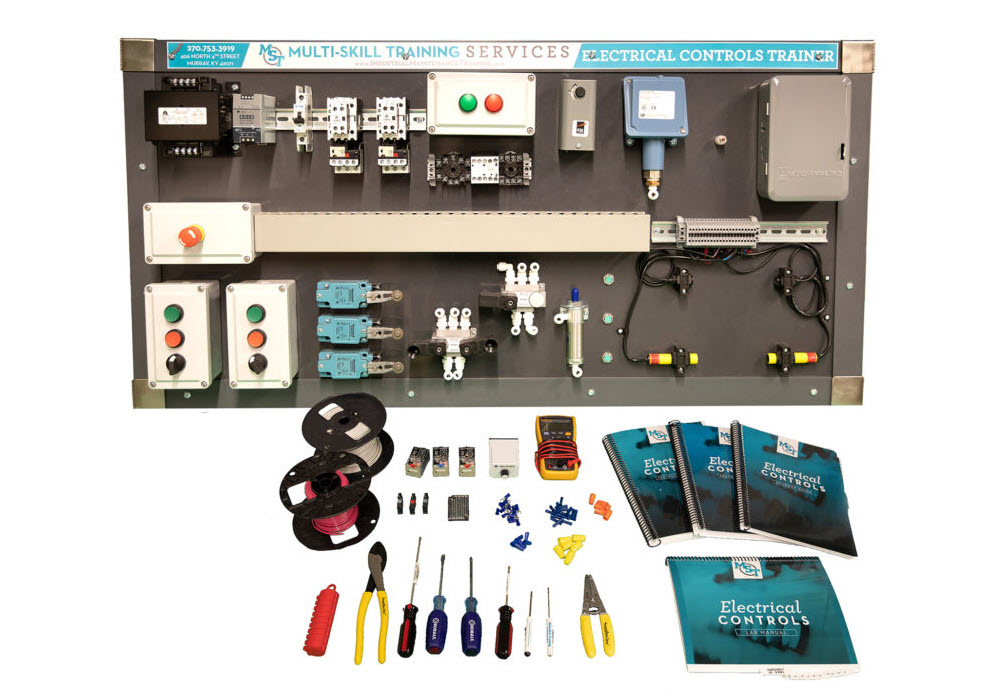Electrical Controls Simulator (1)
Portable workstation with industrial, real world plant components
Matches perfectly to Lab Guide with step by step instructions
Folds up for easy storage
Non-skid rubber feet
Dimensions: 48″ x 20″ x 24″
Our Electrical Controls Training provides a complete electrical control training from a subject matter expert. We utilize electrical control simulators to demonstrate real world electrical controls. Whether you choose to schedule onsite training or utilize our curriculum and simulator package, our customized solution will provide your emloyees with comprehensive electrical controls training and experience. Schedule your electrical controls training today!
To learn more about our various Industrial Maintenance Training Programs including Maintenance Fundamentals Training, Industrial Electrical Training, Mechanical Training, Pneumatics Controls Training, Programmable Logic Control Training, or Analog Controls Training, contact us today.


Industrial Control Language, Basic Rules of Diagrams, Wiring Diagrams, Types of Control Systems, Magnetic Control Circuits, One Load Per Line, Load Connections, Control Device Connections, Line Number Reference, Numerical Cross-Reference Systems, Signals of Control Circuits, Basic Control Circuits, Pilot Devices and Pilot Lights, Pushbutton Sequence Control, Jogging Controlled by a Selector Switch
Legend Plates, Operators, Contact Blocks, Selector Switches, Limit Switches, Types of Limit Switches and Applications, Installation of Limit Switches
Types of Relays, General Purpose Relays, Machine Control Relays, Contact Construction, Contact Life Expectancy, Contact Failure, Solid-State Relays, Relay Ratings, Voltage Drop, A Comparison of Electromechanical and Solid-State Relays, Manual Relay Operation, Troubleshooting Relays
Drum Switches, Pressure Switches, Typical Pressure Switch Applications, Differential Pressure, Protecting Pressure Switches, Temperature Switches, Smoke/Gas Switches, Flow and Float Switches, Installation of Flow Switches, Level Switches, Temperature and Level Control Combinations, Automated Systems, Preventing Problems When Installing Control Devices, Protecting Switch Contacts, Testing Electromechanical Switches, Troubleshooting Control Devices
Operation, Light Sources, Applications of Photoelectric Switches, Symbols, Modes of Use, General Characteristics, Scanning Techniques, Fiber Optics, Lasers, Selecting Scanning Methods, Precautions, Handling of Photoelectric Switches
Types of Proximity Switches, Self-Contained Low-Profile Extended-Sensing-Range Inductive and Compact Inductive Proximity Switches, Selecting Proximity Switches, Hall Effect Sensors, Hall Effect Sensor Actuation, Hall Effect Sensor Applications, Photoelectric and Proximity Outputs
Types of Timers, Solid-State Timer Modes, Thumbwheel and DIP Switches, Timer Functions, Supply Voltage Controlled Timers, Contact-Controlled, Multiple Contact and Motor-Driven Timers, One-Shot Timer and Multiple Contact Timer Applications, Timer and Counters for PLCs, Troubleshooting Timing Circuits
Determining Causes of Failure, Manual Relay Operations, Troubleshooting Equipment and Testing, Multimeter Test, Troubleshooting Solid-State Relays, Relay Fails to Turn OFF Load, Relay Fails to Turn ON Load, Erratic Relay Operation, Troubleshooting Contactors and Motor Starters, Troubleshooting Guides, Troubleshooting Mechanical Switches, Troubleshooting Solid-State Switches, Two-Wire Solid-State Switches, Three-Wire Solid-State Switches, Protecting Switch Contacts, Flush-Mounted Inductive and Capacitive Proximity Sensors, Non-Flush-Mounted Inductive Capacitive Proximity Sensors, Mounting Photoelectric Sensors, Protecting Pressure Switches, Flow Switches, Troubleshooting Solenoid-Operated Valves, Troubleshooting Solenoids, Heating Elements, Troubleshooting Heating Elements, Open or Short Circuit Test, Power Draw Test, Insulation Breakdown Test
Definition, Industrial Control Schematics, Elements of Control Circuits, The Need for Control Circuits, Control Circuit Requirements, Installation of Control Circuits, Safety, Multiple Devices from Different Locations and from a Common Supply Voltage, Simultaneous Operation of Magnetic Starters, Pressure Switch with Pilot Light Indicating Device Activation, Start/Stop Station with Pilot Light Indicating No Device Activation, Pushbutton Sequence Control, Selector Switch Jogging, Forward and Reverse Control Using Indicator Lights
Definition of On-Line Troubleshooting, Key Components of Effective Troubleshooting, Procedures, On-Line Troubleshooting Versus Conventional Troubleshooting Methods, Safety
Let us design the perfect one for you.
© 2024. Multi-Skill Training Services, Inc.